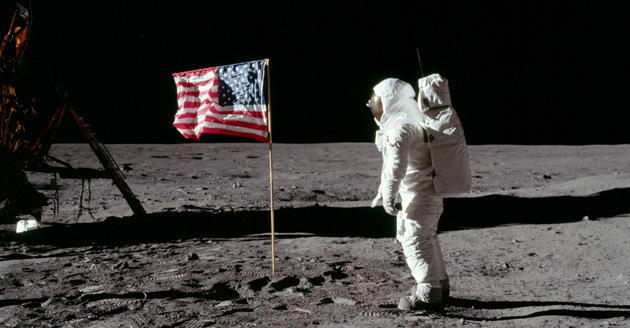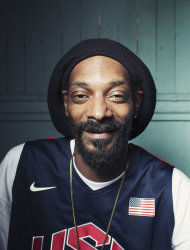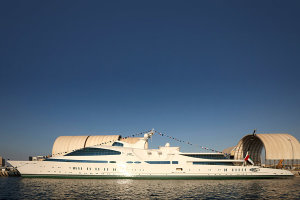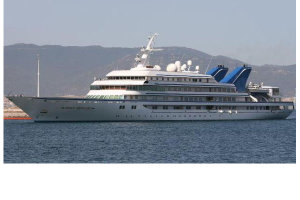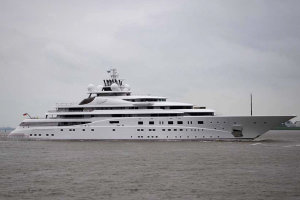On Earth, Scott Maxwell drives his red Prius without paying much
attention to the San Gabriel Mountains in the distance. He's lived in
the same neighborhood of Pasadena for 18 years, after all.
When he's driving on
Mars, though, every rock he encounters is a new discovery, a step toward
humanity's knowledge of the planet he hopes to visit some day.
Maxwell has the dream job
of driving rovers on Mars, and he's gearing up to take control of the
biggest and most sophisticated one yet: Curiosity. He's one of about a
dozen people at NASA tasked with steering the $2.6 billion vehicle from
more than 100 million miles away.
"It's a priceless
national asset that happens to be sitting on the surface of another
planet," Maxwell says of the rover, which is set to land on Mars at 1:31
a.m. ET Monday. "You better take that damn seriously."
As a child, Scott Maxwell dreamed of visiting other planets; now he gets to drive rovers on Mars.
Maxwell loves to talk
about how much he loves his job, and his effervescence is infectious,
say colleagues at NASA's Jet Propulsion Laboratory, home to Curiosity's
mission control.
"The thing that always
impressed me about Scott was just the passion that he has for what we're
doing. He just loves being a rover driver," says Steve Squyers, a Mars
expert who's worked closely with Maxwell. "He thinks he's got the
coolest job on the planet, and he's right, I think."
The names of the rovers
Maxwell has driven so far -- Spirit and Opportunity -- speak to his
upbeat attitude and thirst for immersing himself in what he enjoys
doing.
Through his blog and Twitter account
@marsroverdriver, Maxwell interacts with all sorts of self-professed "rover-huggers" -- people who really love rovers.
Earlier this week Maxwell tweeted, "VIP seats for opening night of
@IndyShakes's Comedy of Errors! Last chance to see a play before the baby comes Sunday."
The baby, of course, is
the SUV-sized Curiosity, coming to Mars after years of planning and
preparation. It's been more than eight months since it left Earth, and
no one can be sure exactly how it will behave, says Maxwell.
Over dinner in Old
Pasadena this week, Maxwell and his girlfriend, Kim Lichtenberg -- a
planetary scientist also working on the rover mission -- playfully
compared it to having a child, though neither has had children.
"We're all going to be kind of like new parents," Lichtenberg says.
"Watch it take its first steps," Maxwell adds.
Landing Curiosity will be such an amazing feat of engineering that NASA is billing the process "seven minutes of terror."
Like anxious parents,
scientists at the Jet Propulsion Laboratory in Pasadena are eager to see
the rover arrive safely, and so are the reporters who have flooded the
NASA campus.
Maxwell says he has
confidence in the JPL team responsible for the entry, descent and
landing of the spacecraft. But if the amazing maneuver goes wrong, the
whole effort will have been "all for nothing" for the many people who've
sacrificing family time and vacations to pour their hearts into it.
"That seven minutes tells you whether the last seven years of your life had a point," Maxwell says.
A voyage to break down the wall
Maxwell's eyes widen
with joy when he talks about the parts of life he thinks are "awesome":
His girlfriend. His other NASA team members. The Independent Shakespeare
Company (@IndyShakes). His first lemon drop cocktail. The Cotswolds.
Something about
Maxwell's thin frame, boyish features and the way he gets giddy over
esoteric things resembles Jim Parsons' character on "The Big Bang
Theory," although Maxwell is more jovial and socially gracious than
Sheldon Cooper. His arms seem almost impossibly long as they move about
while he explains the rover driving process.
 NASA reveals panoramic view of Mars
NASA reveals panoramic view of Mars
With a youthful
complexion and hair that finishes in a short tail on the back of his
neck, it's impossible to guess Maxwell is 41. The first time he ever had
lunch with Lichtenberg, she thought, "Aw man, he's way too young for
me. Way too young for me." Later she found out she's about six years his
junior.
Lichtenberg, fair and blond, grew up with the space program close at hand: Her father is astronaut
Byron Lichtenberg,
a NASA payload specialist who's flown on two shuttle missions. She has a
Ph.D. in planetary spectroscopy, which deals with the interaction of
matter and radiation in planetary environments.
Maxwell, on the other hand, had long assumed that a career in space was out of reach.
He was raised in an
economically depressed rural area of eastern North Carolina, although
his accent could just as well place him from the Midwest. His parents
divorced when he was 7; after his mother moved to Florida, he spent time
bouncing between the two states until college.
His father was a railroad engineer for most of his career, although he previously worked as a dean at various colleges.
Carl Sagan was Maxwell's
childhood hero. He adored watching the 13-part TV series Sagan hosted
called "Cosmos: A Personal Voyage," first broadcast in 1980 on PBS.
In one episode, the
scientist talked about what it would be like to go to Mars. Only last
year, Maxwell watched the episode again and remembered it mentioned a
prototype Mars rover, which at that time seemed a futuristic idea.
"I realized in that
moment that that's where I get this sense that I've grown up and stepped
into this fantasy world that I had when I was a kid, because I have," he says with excited emphasis.
As a child, Maxwell
loved imagining what it would be like to go to other planets. But as an
older teen, he assumed he would study hard and end up in a career that
seemed more common and attainable than space exploration, such as
banking.
"This kind of thing
always seemed to me like the kind of thing other people do," he said.
"There's me. And there's this big invisible glass wall. And there are
people who are doing stuff like that."
Maxwell believed he could never cross over to the other side of glass wall.
Mission Control for Curiosity at NASA's Jet Propulsion Laboratory in Pasadena, California.
It wasn't until he got
hired by NASA, after completing his master's degree in computer science,
that he realized the wall never existed.
Maxwell is living his
fantasy now, but he hasn't always had such luck. At age 20, while
double-majoring in English and computer science at East Carolina
University, he learned that his swollen lymph nodes were a symptom of
stage 2 Hodgkin's lymphoma. The cancer had spread in his neck and chest.
He went through nine weeks of radiation treatments and has been
cancer-free ever since.
Just days after the
treatments ended, he left for graduate school at the University of
Illinois at Urbana-Champaign. Going from a state school to a prestigious
engineering institution, he was floored on the first day when a
professor expected everyone to have already learned the material in the
first six chapters of an algorithms textbook. Maxwell had to quickly
catch up on his own but says he loved learning so much at once.
And though he feared he
couldn't afford his master's degree, he found work with the research and
development arm of the U.S. Army and left school debt-free.
He had intended to go to Illinois to work toward a Ph.D., but ultimately the cancer changed his priorities.
"I was interested in going out and making tools for people to use," he says.
JPL came to recruit at
his school in fall 1993, and he remembers telling the recruiter how he
was fascinated by NASA's Voyager mission -- twin spacecraft that had
photographed Jupiter in unprecedented detail. His excitement apparently
made an impression: He landed an interview at JPL in January 1994, and
started his job that June.
Today, he lives on a
quiet Pasadena street, in a cozy house that boasts some of his nerdy
treasures, including an extensive collection of science fiction books.
"But then my life became science fiction," he said, explaining why he's
reading more Shakespeare and Dickens these days. As he shows off his
collection, his cat Molly purrs, demanding his attention. The brown and
black marbling on her otherwise white fur looks somewhat like the
Martian landscape, although that's not why he adopted her.
A glass-paneled cabinet
hosts metallic "Star Wars" and Mars rover lunch boxes. There's a vial of
a substance he calls KimSim, a material his girlfriend helped create to
figure out how to rescue the Spirit rover after it got stuck in a "sand
trap" of alien soil on Mars in 2009.
And there are stones
from the Cotswolds, an area in England he bubbles with excitement over.
He says, "Wait, wait," like a child about to demonstrate a new toy, and
runs to get a book filled with images of the region. He likes the views
from the ground better than the aerial shots -- ground-level is more
like what a rover would see, he explains.
The wider,
well-manicured street perpendicular to his own, with larger houses and
roses growing on front lawns, is the sort of place where he'd always
wanted to live, but he says the houses are "wicked, ridiculous, crazy
expensive." Still, he loves the house he bought, with the added bonus of
a lemon tree growing at its side.
It's a bit like how he loves his job driving a vehicle on Mars, even though he dreamed of becoming an astronaut.
"Things in my life aren't quite how I pictured them," he said, "but they rhyme."
At NASA, not just a sojourner
It's been 18 years, but
Maxwell still occasionally interrupts himself to say things like "I
can't get over that I work at a place called the Spacecraft Assembly
Facility" when he mentions that building at JPL.
James Wang, test conductor for Curiosity, with the test model of the rover used for experiments on Earth.
For the first couple of
months there, Maxwell felt like he was in a foreign country where he
didn't speak the language. He says it was fun to be clueless about the
acronyms his colleagues were throwing around. "Now, I'll use 10 acronyms
in a sentence and won't think twice about it," he says, "but you kind
of have to pick up the culture."
He started out working
on software to decode data from spacecraft. He also wrote software to
help coordinate various teams working around the world to get commands
to spacecraft.
In the mid-1990s,
Maxwell was asked if he wanted to work on a mission called Mars
Pathfinder. Maxwell had no idea what that was, and working on the team
didn't appeal to him.
What he didn't know was
that Mars Pathfinder would mark the first time NASA had sent an
untethered robotic device to another planet. The 90-day mission was
carried out by a rover named Sojourner.
"I just thought that was
super cool, that really just captured my imagination, that you could go
for a walk on another planet," he says. "Not with your squishy, frail,
human body, but you could design a robot body that would go to Mars for
you."
Although he passed up
that opportunity, another chance came in 1999 when Brian Cooper, who'd
driven Sojourner, approached Maxwell about developing rover-driving
software for the next Mars mission.
"More or less before the
words were out of his mouth -- like, 'Do you want to come work on this
project?' -- I was like, "YES! Yes! I'd like to come work on this
project, that'd be the coolest thing in the world, yes!"
That mission was
eventually scrapped, but their efforts were put toward a different
endeavor that did take off: Spirit and Opportunity, the twin Mars
exploration rovers that launched in the summer of 2003.
Maxwell helped write the
software that rover drivers would use for the pair, as well as for
Curiosity. He would soon move from writing software to using it to
command -- and ultimately drive -- the rovers.
His first time
commanding a rover was on his 33rd birthday, in 2004. Spirit hadn't
started moving across the Mars surface yet, but Maxwell and his
colleague were checking out the instruments. Maxwell told the rover to
ignore the state of a switch on one of the instruments -- not exactly
driving, he said, "but by golly, I commanded a Mars rover that day."
The real drama came
about three weeks later when he got behind the wheel, so to speak. He
remembers obsessing over what he had to do, checking everything multiple
times, before sending the driving instructions.
He remembers going home
afterwards: "I'm lying there, looking at the ceiling, realizing there's a
robot on another planet doing what I told it to. And that notion of,
'I'm getting to do this. I'm not dreaming about this anymore. It's real
for me now.'
"I reach out across 100
million miles of emptiness and move something on the surface of another
planet. That feeling has never left me."
The opportunity to drive
You might think a rover
driver would control the vehicle using a joystick and virtual reality
interface, much like a video game. That's not how it works. The reason
for that: Signals take at least four minutes to travel from Earth to
Mars (it could take up to 20 minutes, depending on where the planets are
in their orbits), and then the same amount of time for confirmation
data to come back.
So rover drivers don't
tell the vehicle to move forward and then wait several minutes for
confirmation that it happened before sending the next command. Instead,
drivers spend their days writing directions for what the rover will do
the next day, sometimes even a few days if it's a holiday weekend.
Maxwell and colleagues
spend the Martian night generating a single batch of commands, which
they send to the rover after the vehicle sees sunrise. Drivers work in
overlapping 8- to 10-hour shifts preparing the rover for the day ahead.
"It's as if we're e-mailing the rover its to-do list for the entire
day," Maxwell explains. And at the end of its day, the rover sends
information back saying what it did. During the Martian night, the rover
goes to sleep.
That might sound risky,
letting a vehicle roam around on a planet for several hours without
someone guiding its every move in real time. But safety checks are built
in. Curiosity will know how far its wheels are moving up and down, so
it will stop if it heads into something deeper or higher than the
drivers had planned. In that sense, the rover is more like a boat than a
plane -- stopping is a fine course of action if additional direction is
needed, Maxwell explains.
Curiosity can travel up
to about 2.5 meters (8.2 feet) per minute, says rover driver John
Wright, but in practice it will go a lot slower because the science team
will want it to stop and examine its surroundings. A rover may stop and
take photos, or -- as will be the case with Curiosity -- the scientists
will want it to stop to perform chemical analyses.
Scott Maxwell wears 3-D glasses to simulate driving a Mars rover at JPL's Mission Operations area.
Photos the rover takes
of its surroundings help the drivers determine where to send it next.
The drivers use a 3-D simulation created from the photos to visualize
what the rover is seeing. The virtual model of Mars lets drivers work
out which commands to transmit each day. Video games have helped several
rover drivers hone their skills, including Maxwell, since driving on
Mars requires planning and multidimensional thinking.
Any game that shows a
large open world, such as "World of Warcraft," can hone these skills,
says Cooper, the first rover driver and the only person to have driven
all three rovers NASA has landed on Mars.
"You're essentially
driving a robot with a keyboard 100 million miles away," says Maxwell.
"You can't always believe what the simulator tells you. If anything does
go wrong, there's no one there to hit the panic switch."
Besides being manually
controlled, the rover also has the capability to drive by itself,
detecting hazards through cameras and driving around them. This
autonomous mode takes more time, however, so it's employed less often.
Curiosity is landing in
Gale Crater, where it may find evidence the area once was a lake. It
will take at least a year to drive Curiosity to its ultimate
destination, Mount Sharp, where the rover will examine layers of
sediment for organic molecules, which would be signs -- but still not
proof -- that life may have existed on the planet.
Maxwell will see some of
the images Curiosity takes before anyone else does, but he loves that
the public will get to view them soon after on NASA's website. "I get to
take everybody in the world along in the backseat," he said.
Beyond rover driving,
Maxwell genuinely loves the science of Mars. The rover science team has
its own busy agenda, but during the mission involving Spirit and
Opportunity, Maxwell would point out rocks that might be interesting to
examine further, or suggest photographing the sunset on a given day.
Sometimes the science team would take him up on his ideas.
"He's always looking to
try to get as much out of the vehicles as possible," says Squyers, lead
scientist of the Mars Exploration Rover mission, which involved Spirit
and Opportunity. "Scott is, within the bounds of safety, one of the most
enthusiastic rover drivers there is."
The spirit of his first car
There's a special love
that Maxwell has for Spirit, the first rover he ever drove. Spirit was
only supposed to last about 90 days, but the rover kept operating for
more than five years.
When Spirit got stuck in
May 2009, Maxwell felt like he was in an Indiana Jones movie, trying to
rescue the vehicle. The rover's wheels broke through a crust and the
vehicle fell into a sandy trap called Troy, like a car driving into a
pool of flour. Even before the accident, one of its six wheels had quit
working.
Scott Maxwell, top, Kim Lichtenberg, left, and Pauline Hwang test how to get Spirit out of a Martian "sand trap."
Maxwell and his
colleagues were almost able to pull Spirit out, but not quite. They had
figured out a technique, but with the Martian winter coming, the solar
panels were tilted away from the sun. Plus a second wheel malfunctioned
during escape tactics. Over the winter, something broke -- Maxwell says
humanity may never know what.
The Opportunity rover,
which Maxwell has also had a hand in driving, is still operating. Still,
he is nostalgic about the Spirit.
"It's very much the way
you feel about your first car," Maxwell says. "Spirit was my first car.
She was just on Mars. That was the emotional closeness that I felt to
her."
Even after it stopped
moving, Spirit was able to continue scientific operations until March
2010, when NASA lost communication with it. The place it got stuck
turned out to be extremely interesting -- while trying to escape, the
rover found soil rich in minerals called sulfates, a component of steam,
suggesting that there may have once been conditions on Mars able to
support life.
It -- or rather "she," says Maxwell -- accomplished this with an attitude of "persistence and determination and never say die."
Scientists kept trying to communicate until May 2011, when they gave up.
"Spirit will be there
for a million years, but I sure hope that there are Martian cities
surrounding her," Maxwell says. He envisions trails commemorating the
rovers' paths and hopes people someday will be "walking the Spirit
trail."
Loving to be curious
Given the busy schedule and odd hours, it helps to be in love with someone who works on Mars, too.
Maxwell and Lichtenberg
had been hearing each other as disembodied voices on NASA conference
calls for years, while Lichtenberg was a graduate student at the
University of Washington in St. Louis. She visited JPL with her adviser
on the five-year anniversary of the Spirit and Opportunity mission.
They met in person at a
group lunch; each thought the other was attractive. Maxwell spent a
couple days working up the nerve to ask her out and finally did on the
day beloved science fiction author Ray Bradbury gave a surprise speech
at NASA. Maxwell began by asking her, "Is anybody doing anything
tonight?" She said a group was going out; he replied that he wanted to
go out with a cute girl he'd just met. After she realized he meant her,
she said yes -- much to Maxwell's astonishment.
This week, just days
before the Curiosity landing, the couple had dinner with me at a quaint
Mediterranean restaurant in Pasadena's Old Town. When they weren't
holding hands, Maxwell was putting his arm around the back of her chair.
As they said goodnight for the evening, they kissed three times -- and
both said they planned to stay up late and sleep in to practice shifting
to Mars time.
Part of the fun of
working on Curiosity will be living on Mars time for about the first 90
days, Maxwell says. The days on Mars are 40 minutes longer than on
Earth. That means Maxwell might start at 8 a.m. Monday, 8:40 a.m.
Tuesday, 9:20 a.m. Wednesday and so on. Before long, he'll be working
overnights.
"I like to say I sleep 40 minutes more, I actually work 40 minutes [more]," he said.
Lichtenberg is the
co-lead on the science planning team for the Curiosity mission. That
means she helps other scientists decide what they will do with the rover
every day, given how much power and time the tasks will take and how
much data will be required.
On their first date
about three and half years ago, Lichtenberg was sold when Maxwell told
her that while healing from a martial arts-induced shoulder injury, he
decided he would read all of Shakespeare's plays. And he did.
"He really sticks to his
convictions, and I really, really like that about him," Lichtenberg
says. "Being around him makes me want to be a better person."
Maxwell insists that
Lichtenberg did not move to Southern California for him. She agrees that
she wanted to work at JPL anyway, but Maxwell was at least "a small
bit" of the decision. These days they work down the hall from each
other, and although they are on the same operations team, they are
assigned to different shifts.
Scott Maxwell and Kim Lichtenberg have been dating for more than three years; both work on Mars rover missions.
The affectionate, happy partners share a love of Mars and, if possible, would both like to go some day.
"If NASA set up a flight tomorrow, I'd be the first one. They wouldn't have to bring me back," Maxwell says.
He'd be gone in a snap,
even if there were just one seat. Lichtenberg, although she likes the
idea of visiting Mars, is not sure she'd just pack up and go by herself.
"I totally understand that you would," she tells him. "It's OK, I accept that. Totally."
"It's not that I like Mars better than I like you," he assures her. They peck each other on the lips.
But there is something
powerful that draws Maxwell to Mars. It's partly the idea of being on
the surface of another world. There's also his own mortality. He
believes the radiation treatments he had in his 20s will ultimately lead
to a different form of cancer (he actually had a possible thyroid
cancer a few years ago, which turned out to be benign). Maxwell
estimates -- without a hint of regret in his voice -- that he has about
20 years left to live.
"I've only got so long
anyway, you might as well make it something really good. Right? You
might as well make it count," he tells me and Lichtenberg. "And what am I
going to do that's going to be better than actually going to Mars? Go
on, name three things I'm going to do that are better than that."
"Drive a Mars rover," says Lichtenberg.
Maxwell agrees his job is "awesome" but says going to Mars would be "even better."
With that level of passion and spirit, Maxwell may one day indeed follow his Curiosity.
Retweet this story


 NASA reveals panoramic view of Mars
NASA reveals panoramic view of Mars






